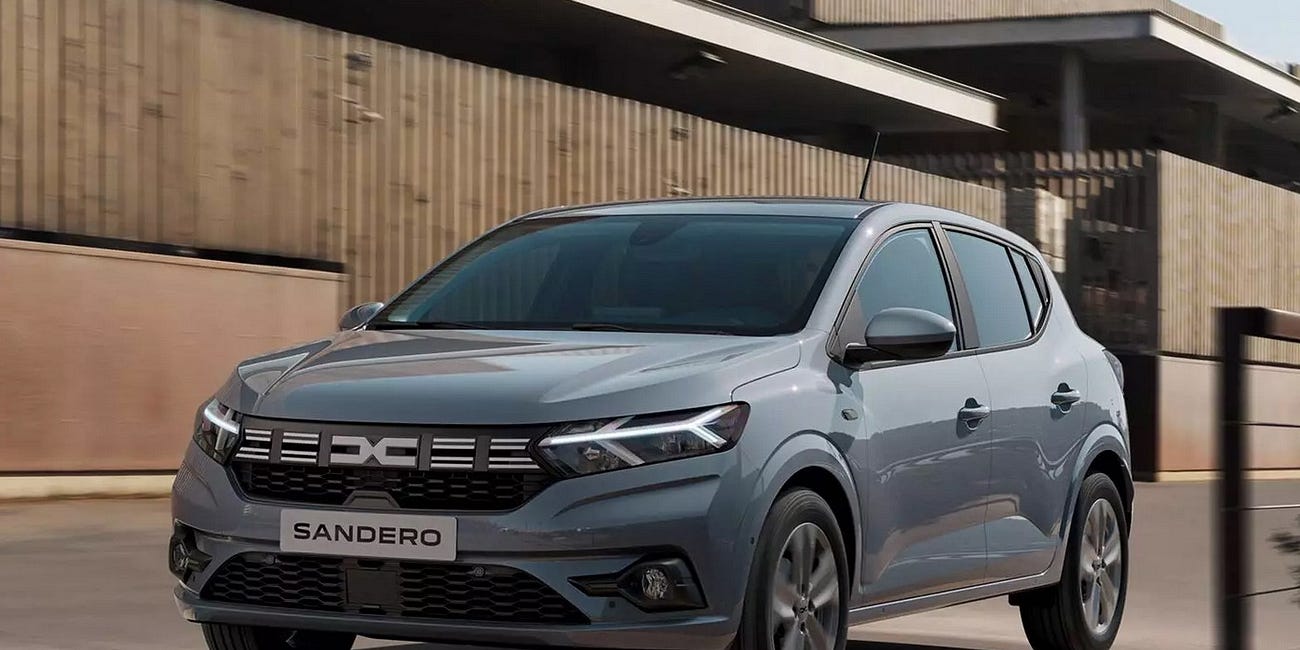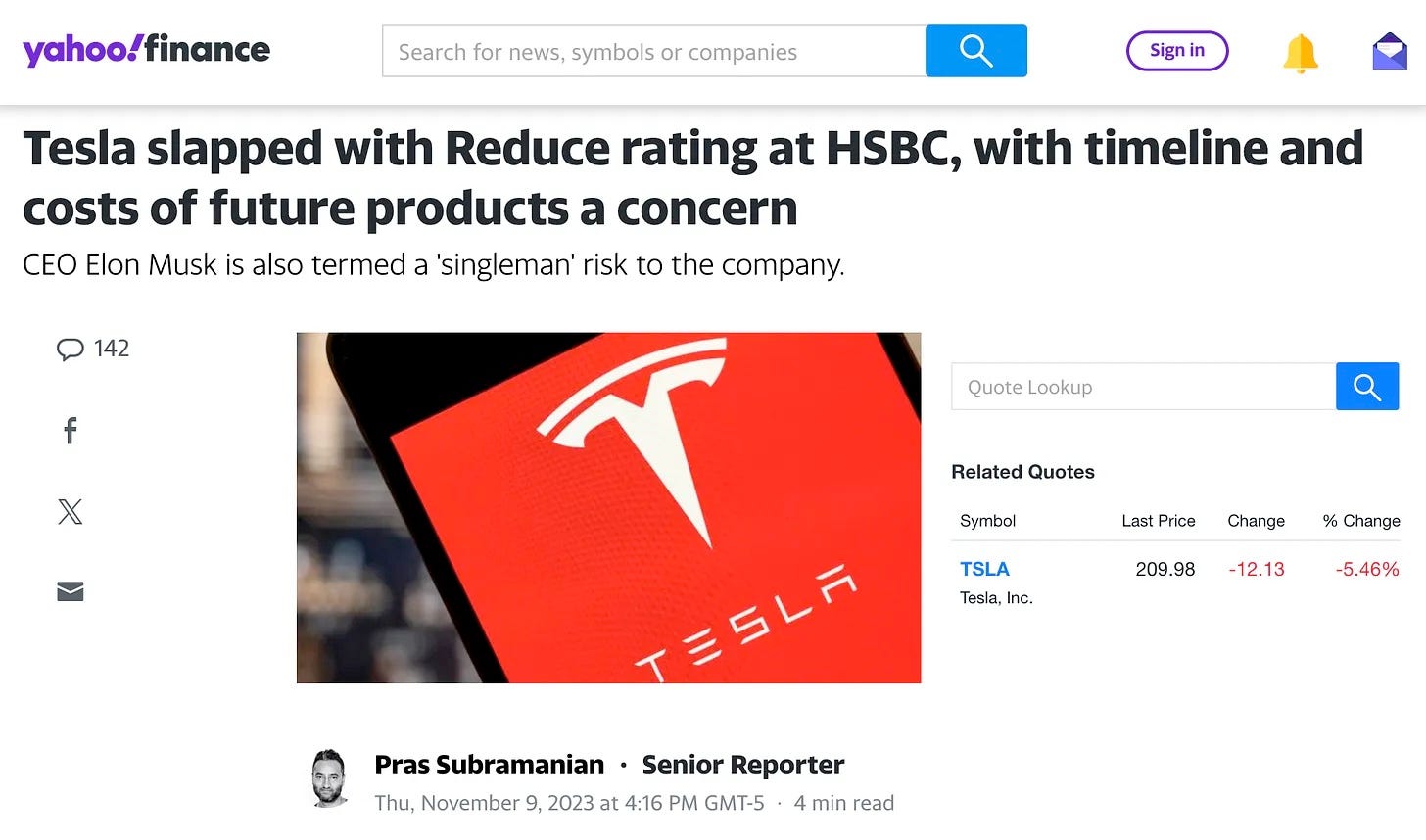CyberTruck v. Sandero: let’s Compare the Incomparable!
Tesla's CyberTruck and Dacia's Sandero are two very different vehicles. One is big and electric; the other is small and runs on gasoline. They are like apples and oranges. So, let’s compare them!
Today, what about comparing the incomparable?
What about comparing apples and oranges?
What a weird idea you will say! So let’s explain.
Both apples and oranges contribute to your nutrition. They largely fulfill the same function.
When it comes to cars, we need to think about their main function, which is to bring yourself and passengers, possibly with a cargo, safely, from A to B.
With electric vehicles, a major issue is that big, heavy, vehicles, such as large sedans, trucks, SUVs, lorries, etc. require especially heavy battery packs, because of the inherent low energy density of existing batteries.
Electric vehicles require therefore more energy to be displaced than their equivalent internal combustion engine or hybrid counterparts. And this increased energy obviously needs to come from somewhere.
In addition, while vehicles are essentially aimed at bringing you from A to B, there has been a trend, over the past 50 years or so, towards bigger, heavier, and pricier, vehicles, such as SUVs, even when such overweight, oversized vehicles were not needed to fulfill their core function.
It’s against this background that the present post needs to be read. We contrast the big heavy Tesla CyberTruck, using the currently available (even if not official) specifications, with a relatively light, small and affordable internal combustion engine vehicle, that is very popular in France - the Dacia Sandero.
Note: We are also on YouTube, TikTok and Instagram, where you are most welcome to follow us. Podcast episodes are on Apple, Spotify and other platforms.
Who will Drive the CyberTruck?
When it comes to Tesla’s CyberTruck, unveiled now 4 years ago, it’s fair to assume that most of the buyers of that vehicle will not be typical truck owners or drivers.
Indeed, the usual issues with EVs - high price, limited range, long charging time, declining battery capacity over time, etc. - are simply not acceptable to people who need a truck for work. These issues are very real, very tangible, and there is no real significant positives to counteract them with the CyberTruck.
It looks like many CyberTruck buyers will be high income white collar executives who may need the vehicle mostly to commute, or simply as an alternative to their current SUV. The vehicle may be used to drive the kids to school, to go for a day trip, for kayaking, fishing or whatever.
But both the Sandero and the CyberTruck can easily transport one or two kayaks, or a canoe or a small sailing dinghy, a tent, a few fishing rods, or even a few arrow and bows - as Joe Rogan seems to like, from what we learned in his recent interview with Elon Musk.
So it’s fair to compare the CyberTruck with a small car, that is capable to fulfill most of those same functions, as a large share of CyberTruck drivers can be expected to not use their vehicle for its truck function.
Let’s Compare Apples with Oranges!
Let’s compare the Tesla CyberTruck with the Dacia Sandero.
Why the Dacia Sandero? It’s just a popular car in France and it’s also one we reviewed in our first article on EVs, as we compared the Dacia Sandero to its electric version - the Dacia Spring.
Here are a few numbers:
Vehicle weight: Sandero is 2238 lbs; CyberTruck is 6670 lbs (as per a recently leaked info). Weight in kg: Sandero is 1015 Kg; CyberTruck is 3025 kg.
The CyberTruck is 3 times heavier than the Sandero! This obviously does not fare well for the CyberTruck, as weight is an enemy of energy efficiency.
Regarding range, the Sandero has a fuel tank of 50 litres and a consumption of 5.4 litres / 100 km ; so the range is 925 km, or 575 miles. For the CyberTruck, estimates put the range at 350 miles, i.e. 563 km.
Let’s now adjust the ranges by reducing the gasoline range by 10% (you want to keep 5 litres in your tank just in case) and by 30% for the CyberTruck, as Elon Musk explained on the recent Joe Rogan Experience show.
Adjusted ranges: Sandero 832 km or 517 miles; Cybertruck: 394 km or 245 miles
The CyberTruck’s actual range is approximately half that of the Sandero!
Like any battery electric vehicle, the range is dependent on the outside temperature, and can further decline by 10%, 20% or more, as the batteries are not resilient to colder climates. Keep this in mind, yet we will not factor this seasonal element here.
Let’s now move to charging time. Filling up a gas tank is about 5 minutes, 10 minutes max.
The detailed specs of the CyberTruck battery have not been revealed, but if we take the numbers of Tesla’s Model X long range, we have the following: a 80% fill up requires a minimum of 30 minutes; while a 100% fill up requires about 60 minutes.
So it takes 6 to 12 times longer to fuel up the CyberTruck than to fill the Sandero’s tank. And this does not take into account the likelihood of longer lines at electric charging stations, which can add considerable time for charging the vehicle.
Energy Consumption / CO2 Emissions
Let’s now look at the energy consumption and CO2 emissions for driving those two vehicles. Yes, both vehicles require energy to be driven, which means both vehicles will induce CO2 emissions, directly or indirectly.
Remember, there is no such thing as a zero emission vehicle, which is a widely used misleading concept to promote EVs.
Both types of vehicles induce emissions: for the gasoline powered Sandero, the emissions come from the exhaust / tail pipe, while they originate from the power plants feeding the electric grid in the case of the CyberTruck.
To estimate the CyberTruck energy needs, let’s figure out the typical fuel consumption of a truck weighting approx 6670 lbs or 3 tons.
Let’s take the example of the Ford F-150, but keep in mind that there are more fuel efficient (and lighter) trucks on the market.
Regarding gas mileage, “With the base V6 engine and rear-wheel drive, the 2023 F-150 gets an EPA-estimated 19 mpg in the city and 24 mpg on the highway.”
So let’s assume a consumption of 22 miles per gallon, which is 10.7 Litres per 100 km
Roughly speaking, the energy needs, translated into gasoline consumption, of the CyberTruck are double that of the Dacia Sandero.
The CyberTruck weights three times the Sandero, yet requires double the amount of energy to be driven around.
Note that the Sandero is not the most fuel efficient small car. Models such as the latest Diesel golf are even more fuel efficient, as discussed in this previous post about CO2 emissions of efficient ICE vehicles versus those of electric vehicles.
How do these energy needs translate into CO2 emissions, for driving the vehicle?
To approximate this, one needs to look at the mix of energy sources that power the electric grid.
This varies substantially among jurisdictions.
In this post, we will use the USA energy mix data for 2022, which are:
Coal: 19%
Natural gas: 39%
Nuclear: 18%
Renewable including hydro: 23%
One sees here that, in the US, in average, 58% of the electricity needed to power a vehicle originates from burning fossil fuels (coal or natural gas) while 18% originates from nuclear and 23% from renewables, including hydro.
Again, as a rough approximation, let’s assume the CO2 emissions out of coal and natural gas are in average similar as those from gasoline, and that the efficiency of the energy conversions are similar in power plants (some of them are old and not to the latest efficiency standards) and in a modern ICE vehicles.
Assuming a similar amount of energy is needed to displace a Ford F-150 truck and a Tesla CyberTruck, and that 42% of the electricity powering the CyberTruck is either nuclear or renewable, we can approximate its equivalent consumption of gasoline at 6.2 litres per 100 km, which is 58% of 10.7 litres per 100 km.
In other words, when you drive the CyberTruck for 100 km in the US, you need the equivalent of 6.2 litres originating from fossil fuels and 4.5 litres originating from nuclear or renewables - totalling 10.7 liters per 100 km.
As we mentioned above, the Sandero, which needs about half the energy of the CyberTruck, requires only 5.4 litres / 100 km.
One sees from these numbers that the pure electric CyberTruck EV demands more gasoline / fossil fuels to get powered than does the pure internal combustion engine Sandero car.
Of course, the fossil fuels are not burned into the CyberTruck, they are burned in the power plants, that feed the electricity grid, that in turn feed the CyberTruck.
Now, let’s talk CO2 emissions, which are proportional to the amounts of fossil fuels.
Accordingly, the CyberTruck emits approximately 15% more (6.2 L minus 5.4 L divided by 5.4 L), in addition to requiring nuclear and renewables to be powered.
Assuming 2.28 kg CO2 emissions per litre of gasoline, the Sandero can be estimated to emit 12.3 kg CO2 per 100 km, while the CyberTruck is at 14.1 kg per 100 km.
Again, let’s clarify that these emissions are not occurring at the same location. In the case of the CyberTruck, they happen at the coal and gas fire plants feeding the electric grid, while in the case of the Sandero, they happens through the vehicle tail pipe.
The above numbers are quick and rough approximations, but there is no surprise.
Indeed, a heavy vehicle such as the CyberTruck requires much more energy than a small vehicle such as the Sandero. And given the mix of energies feeding the electric grid, the CyberTruck ends up inducing more emissions than the Sandero.
What about Pricing?
At the CyberTruck unveiling 4 years ago, the pricing of the vehicle was supposed to start from US$39,000.
This number looks now like an old fantasy, as the actual pricing is likely to be in the range of US$70,000 - US$100,000 according to power train, battery pack and options.
The starting price of the Sandero is 12,165 euros, including the 20% sales tax (VAT), which is 10,054 euros before taxes, or 10 767 US$, at the current exchange rate.
So the CyberTruck is at least 5 times more expensive than the Sandero.
You can buy at least five Sanderos for the price of just one CyberTruck.
If the Sandero is an apple, and the CyberTruck is an orange (not a lemon!), you get 5 apples, or more, for the price of just one orange.
Other Considerations
If you are concerned about the environment, keep in mind there is no lithium in the Sandero, so no massive environmental issues associated with the mining of this mineral.
This also means there is no lithium associated “spontaneous fire” risk in the vehicle, as it does not require a lithium-based battery to be powered.
The batteries of the CyberTruck are likely to also contain cobalt, as a September 2022 article reads:
“independent 4680 battery teardowns and chemistry analysis shows that Tesla is still using the regular 811 nickel-manganese-cobalt mixture for the cathodes and ordinary graphite anodes.”
If you are concerned about the highly questionable labor conditions associated with Cobalt mining, you will be pleased to learn that there is no cobalt in the Sandero.
There are other considerations that are hard to identify and even harder to quantify, that need to be taken into account in our comparison.
Think for example about the virtue signalling to drive the same vehicle as the world’s richest man, with an aura of environmental-friendliness, even if the reality is just the opposite.
Think about the vanity produced by driving such vehicle. You will believe to be very important and richer than you are, even if you put yourself in debt to acquire it.
Oh. I nearly forgot. The Sandero is likely less resistant to arrow shots by Joe Rogan. But most people, apart from Musk and Rogan, probably don’t care about that.
Let’s Sum Up
The table below summarizes the contrast between the Sandero and the CyberTruck. It even includes references to virtue signalling, vanity and bows and arrows, to spice things up a bit.
If you listen to this as a podcast, you are invited to check out later on the comparison table on the Substack post, as it’s pretty content rich.
Today, the buzz about the CyberTruck is not going away, and Elon Musk is clearly an amazing marketer.
But Musk also recently admitted that “we dug our grave with the CyberTruck.”
There are clearly doubts, including within Tesla, about the suitability of this vehicle.
Likewise, some analysts are skeptical, as per this article on Yahoo Finance. Here is a quote:
“HSBC analyst Michael Tyndall initiated coverage of Tesla on Thursday with a Reduce (or Sell) rating and $146 price target, implying a 33% drop in Tesla’s stock price.”
Tesla’s share was actually 5.46% down today, November 9 2023, as compared to the day before.
As for the Sandero, despite its good energy efficiency and low purchasing price, making it affordable to many people who would not otherwise be able to acquire a new car, its sale will not be allowed in the European Union from 2035.
This is because of the recently voted, and extremely controversial, regulation, or mandate, to only allow the sale of battery powered electric vehicles by that date.
While the Sandero will be excluded, the big heavy truck and SUV electric vehicles will be allowed to be sold on the European Union market after 2035, because of their supposed environmental friendliness, which we just showed is completely misguided.
And by the way, Europe is presently facing a major energy crisis, with energy and electricity shortages, and electricity prices are through the roof in many EU countries.
The situation is so bad that Germany, the most influential EU country, is now re-opening coal fired power plants!
The story is clearly far from over, and has considerable ramifications, but it’s now time to put an end to this post!
Until the next one!
Please share and subscribe, and also make to watch or listen to my talks with energy expert and former member of the Canadian House of Commons Dan McTeague, where we discuss with some depths the ins and outs of EVs.
We are also on YouTube, TikTok and Instagram, where you are most welcome to follow us. Podcast episodes are on Apple, Spotify and other platforms.









You appear to have omitted the *EFFICENCIES* parameter along the electric generation/transmission:
- (boiler & Turbine) equivalent to the IC motor
- Alternator
- Transformer High Voltage
- Distribution
- Transformer Low Voltage
- Transformer AC->DC
- Battery
- Electric Motor
Give each step a 90-95% efficency & you get 7 x 5-10% loss from fuel to wheels versus fuel to Electric to Wheels. You are welcome to refine the approach.
Oh. So we're really out of chimeric COV-2, PRRAR, early treatment & toxic genetic injections, are we?